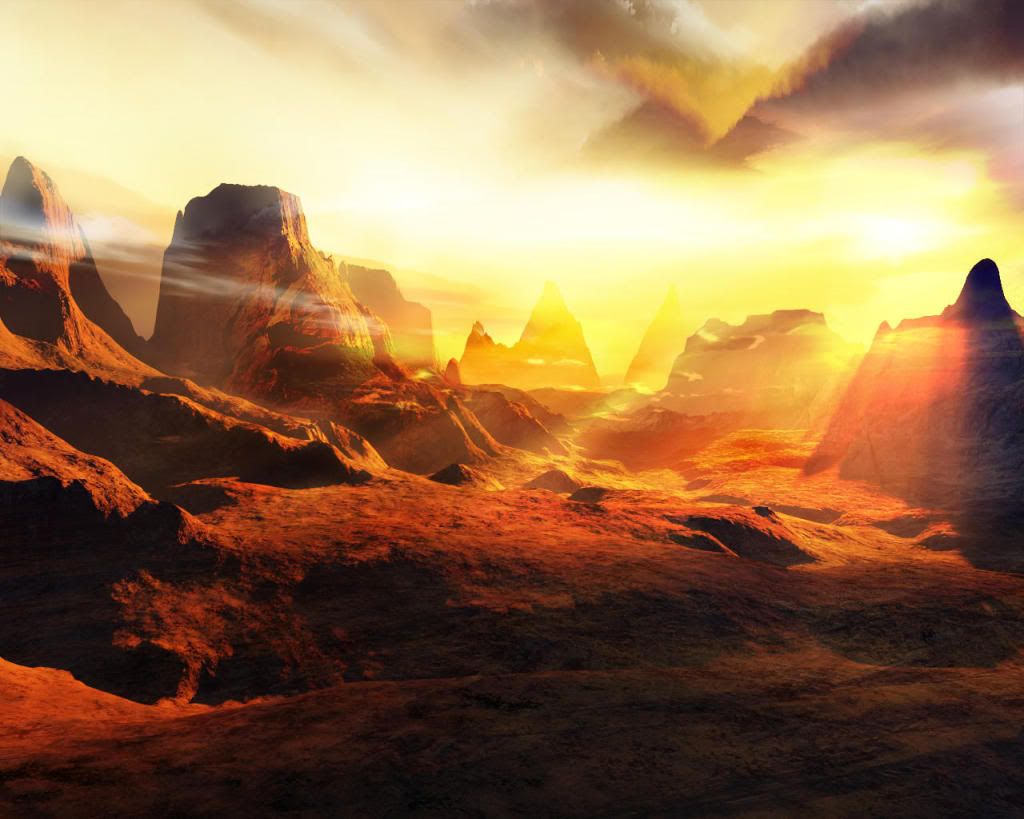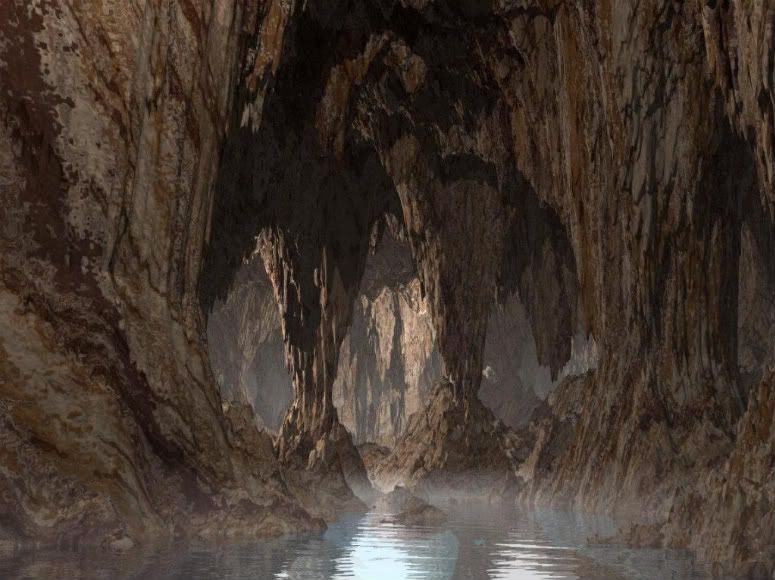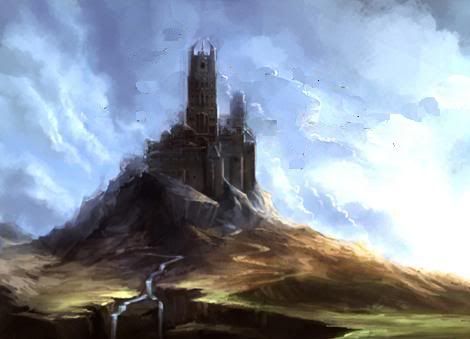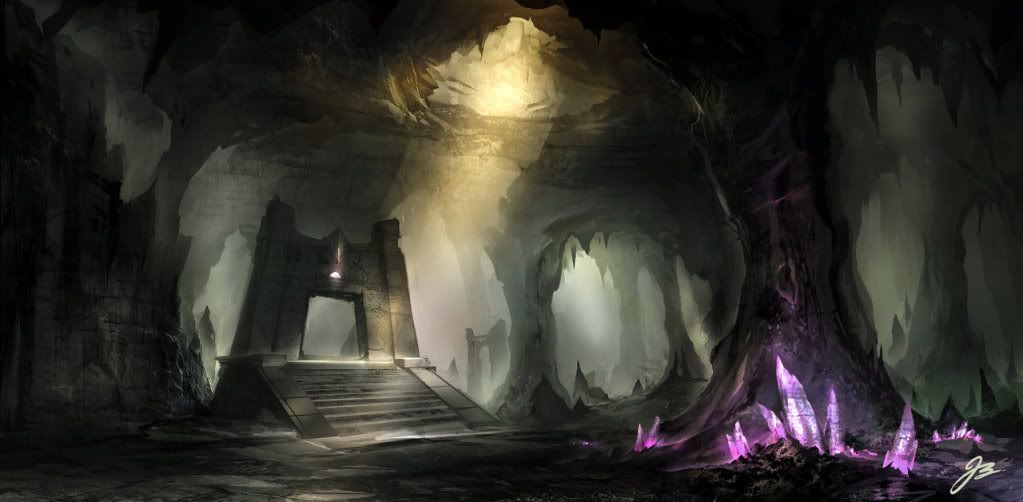Post by Vako on Apr 8, 2011 2:44:47 GMT -5
Malaura

Planet Name: Malaura
Planet Type: Desert
Habitable: Yes
Sector Abrion Sector
System: Ta’kura System
Galactic Region: Outer Rim
Sun: 1
Moons: 3
Orbital Period: 439 days
Day Length: 39 hours
Axial tilt: 19°26'
Gravity: 1.1 g
Atmosphere: Type-1
Climate: Dry
Sentient species: N/A
Non-Sentient species of note: N/A
Terrain Overview


Malaura is simply put a planet sized desert. There will be precipitation on only a a few random points on the planet, usually in the southern hemisphere every few years, and it will be very light and only for a few moments. It falls hear typically due to water pockets beneath the surface having points heat up, evaporate, and escape into the atmosphere. As it clusters over time it will call a light bit of rainfall, but the southern hemisphere is the only place where the water vapor manages to escape due to cracks in the surface. The planet has a number of mountains which are a result of volcanism, which used to very nearly consume the entire planet. A majority of these mountains are dead volcanoes. The surface can range from a sprawling desert to mountainous regions. The sun will eventually hit every piece of the planet every day. The deserts can be harder rock, or sand depending on the regions history of volcanism. Some of it is very smooth, while other portions are jagged and raised.
Notable Geographic Features
Mountains
Mountains

Mountains are found on just about every part of the planet. The remnants of the once extremely violent planetary surface remain as monuments to it’s rugged past. Some of these mountains reach half a dozen miles into the air, while others are only a few hundred feet. They aren’t the most oddly shaped of natural structures found in the galaxy, but their sheer number across the planets surface is what makes them stand out.
Deserts


The planet holds upon it’s surface immense stretches of desert. Most consist of dirt and sand, while others are solid rock which just stretches on as far as the eye can see. Because most of the planet has never been explored no one has named many of the features and portions of the desert. Though there were theoretical names that the Ulzari gave to the different unexplored regions of the planet, those have long since been lost. They now just remain as deserts. Their composition rarely changes. As the wind blows up storms they will often shift mounds and dunes, but nothing that changes so frequently as to be noticeable.
Subterranean Water Passages

The strangest aspect of the planet is no doubt the water beneath its surface. Miles and miles of underwater passages run all over the planet. This isn’t to say that if you just dug a hole you would find water, but at certain concentrated points you could find passages of fresh water that are large, with enough water to fill a small ocean. The water caves have eroded much of the walls that surround them, and have formed massive walls with huge rivers running through them. The water tends to shift through these passage ways, though has come to a pattern in the last several thousand years. This pattern may shift as pressure changes due to seismic activity, but for the most part remains constant. The Ulzari utilized one of these great passages to bring the water to the surface and create a source of life for their society.
Points of Interest
The Ulzari Temple

The Ulzari Temple

The only real sign that the Ulzari ever existed, or that anything ever existed on the planet for that matter, is the great Ulzari Temple. To the average person it would appear as though the temple had been there for many thousands of years, and took generations to complete. This is a deception however, as many tools which are still commonly used in architecture to used to build this mammoth structure. Certain key marks of high power drills, and stone formers can be seen on some of the structures interior walls. It’s exterior has degraded somewhat due to the winds, but has withstood very well because of the material from which it was constructed. It has no elements of electricity to it, and its interior is very basic. There are no images upon the walls as the Ulzari felt that doing such would be a desecration of the purity that the temple presented. There is a great stair well that goes straight through the center of the temple, from its base to the top spire. Only one of the rivers which the Ulzari still created exists today, though it flows larger then they had ever intended as the water from which it comes from eroded portions the rock which allowed for it to flow in several directions. Where once a mighty mountain once stood, there now just sits the empty temple of the Ulzari, with some of their materials still inside.
The Cave of Light
[/b] [/center]
[/center]Considered to be the most sacred place in the entire society of the Ulzari, the Cave of Light lies just beneath their great Temple. It was a place of such purity that only the monks were aloud to set foot within it. To enforce this, temple guards protected a secret stairwell, which led down to it. It is a wide cave with a large collection of beautiful crystals. The Ulzari presumed that their Gods had placed them their as a sign that they still watched over them, and to acknowledge their efforts. Only a few of the crystals were ever damaged so that a piece may be obtained. Inside there are three alters which form a triangle, upon which the monks would perform rituals, hoping to capitalize upon the power which the crystals carried. In the last moments before their society was wiped away by the deadly plague, the monks all gathered down in the Cave of Light to pray for the Gods to intervene. The Ulzari never realized that what they were sitting on had been there long before they arrived. It was a cave of force crystals that was hidden beneath the surface that they had simply stumbled upon after many years of just sitting on top of it. Regardless, it served as the final tomb of their culture, and the place where many of them chose to drag themselves and their sick loved ones to die, so that they may experience the glory that the monks had in their final moments. The sheer amount of death and suffering that occurred in the cave itself is a horrific thing, and it has caused a dark force nexus to remain there even today.
History
Malaura sits in it’s solar system alone, with the exception of a gas giant which is so far away that it can’t be seen in the Malauran sky at all. Malaura was struck frequently by debris large and small. It was also fairly volcanic for millions of years, which was devastating to portions of it’s surface. However over time the planets volcanism slowed down, and the surface began to solidify. The amount of gasses thrown up in it’s earlier history aloud the planet to form a breathable atmosphere. However there was still a very large amount of debris drifting in the area. The planet continued to be struck by debris, however that ceased to happen as the larger pieces drifted out further away and collected into a large asteroid belt farther out into the system. The planets tectonic activity continued to shift its surface, but over time it too slowed down. The surface itself was barren, and empty. Beneath the surface however, there were a number of caverns, and a great deal of flowing water. However that water reached the surface very rarely.
In 5,992 BBY a group of humans took to the sky in search of a new home. They were called the Ulzari, a deeply religious group, and they wanted to find a place that they could call their own. They had been fairly rocked by a serious war, and their homeworld had severly suffered greatly. Much of their culture destroyed. They’d gather together as much as they could salvage to pay for an exodus ship. Some of their people refused to leave, and so they were left behind. The rest boarded the large colony ship and they drifted out. Their leaders made contact with various exploration groups that might know of an isolated location where they could practice their religion, and form their own society in peace. They were informed about a single planet in the Ta’kura system. They made their way to it, and ran preliminary scans of the planet. It was a hot desert world. They had come from a desert on their homeworld, and perceived this to be an ideal location. However they needed to ensure they could survive, and probing of the planet showed there to be water beneath the surface. The Ulzari sent crews down to set up a pressure system which would bring some of that water to the surface. The system they set up forced a steady flow of water up into easily accessible caves. Their primary point however created a river inside of a mountain in which their leaders had decided would be where they would start this new society of theirs.
The architects of Ulzari took great care in designing their temple, which would be the heart of their world. The Ulzari set up a large city out small mud houses, which wrapped around the mountain upon which their temple was being created. Slowly the temple was built up as the Ulzari had dreamed it would be. Most of it being carved from the mountain itself, while other portions were made from displaced portion of the mountain, that had been formed and carved to fit the design, such as the spire. To ensure their society was kept perfect and pure, and subsequent generations wouldn’t be plagued by ideals of beyond, they set a colony ship on a course towards the systems star. And once it was finished, the Ulzari lived in their ideal society. For centuries they continued an expansion, setting up farmsteads, and living in their perfect society, and erasing the concepts of an outer society, instead suggesting that their Gods had brought them with their power, to save them from being overtaken by evil in the land they’d originally come from. As generations died off, and no real evidence to say otherwise, a long mythology was written out of it. Life was as the Ulzari had always imagined it, though it didn’t expand very quickly. The Ulzari wanted to stay close to the temple. Several hundred years later an excavation of the deep caverns beneath the temple was conducted, and the monks discovered what they believed was a sacred sign of their Gods. A cave filled with beautiful crystals. They decreed it their most sacred spot, and only a select few of the culture were pure enough to see it.
In 5,291 BBY their society suffered a serious change. A shining light came from the sky and descended upon them. It landed in the desert just beyond their farmstead. It was a strange vehicle that none among them had seen. They believed that within was a fallen God, and they called upon the monks. Hundreds surrounded the ship which lay upon the ground, as the monks opened it up. Inside, the monks found a dead creature that none of them had ever seen. It was an Ithorian, but they had no idea what it was. He was having trouble breathing and appeared to be rather sick. He coughed and the monks attempted to ask questions. The Ithorian died, and the monks stepped outside, with him in their hands. People all crowded around to see the fallen God. But they had no idea that they were all making a terrible mistake. The Ithorian had a disease, a highly contagious and deadly virus that had broken out on the mother ship he’d come from. The ship itself had quarantined the sick, but the Ithorian was an infected had escaped the quarantine fearing for his life. The Ulzari had absolutely no immunity to this new disease, and they all went back their homes. It was only a few days later that many of those that had been at the ship became very ill. They tried their best to take care of them, but they had no real medicine, and nothing to stop the virus. They soon began to fall to the disease. No one was safe, as the commoners brought it into their homes, and the monks brought it into the temple. They feared it was the end of days, and that what they believed was their God was in fact a demon that they had been saved from when they came there. Many flocked to the temple in hope that once again the Gods would save them. But it was far too late, and by the end of the year, their entire dream society was destroyed.
The livestock eventually all died off, and their crops withered as they were untended to. Over time their wide and expansive villages would succumb to the winds and other elements of the planet. Soon all that remained was the temple itself, as it was the only portion of their society that was actually intended to last for centuries. Made out of the same materials as the mountain, it remained as a large looming monument to the culture that once existed. The water systems still remained, and erosion has caused the river from the temple to form a deep, which it runs through as it spills down into a canyon. The Ulzari Temple still stands there today, though a scan of the planet would just pick it up as a mountain. The planet is still viewed as a barren rock, as the Ulzari weren’t placed on any real database, and the planet is still shown to have no real resources to support any sort of culture on its own. Today the planet just sits lifeless and empty, with anything more then just few artifacts hiding in the sand as little monuments to the society that once existed.[/color]

